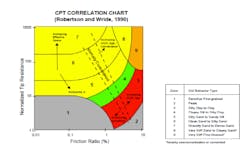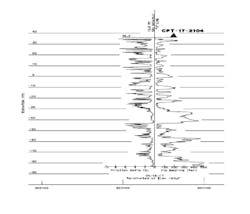Assessing the impact
California, the fifth largest economy in the world and the most populous state in the union, is considered a seismic-prone state where earthquakes play an important role in shaping the design and construction of the infrastructure, critical to its economic well-being. The 1994 Northridge and the 1989 Loma Prieta earthquake events caused extensive damage to infrastructure and led to loss of life. They were reminders in recent memory of how real the impact of earthquakes is on the lives of Californians.
Seismic design and technologies have evolved throughout the years, and with each occurrence of an earthquake, the lessons learned pushes the boundaries of knowledge. But challenges loom. The use of existing technologies and the development of new technologies and design methodologies in assessing the impact of earthquakes on transportation structures and the seismic retrofit of the bridge structures are the keys to unlock the challenges ahead. One of the technologies that has been in use in Europe more than in the U.S. but has gained use progressively in California, especially since the late ‘80s and early ‘90s, is the cone penetration test. This is especially true in Southern California where the innovative and alternative methods in megaproject deliveries on highway bridge structures, such as design-build (DB), has played a significant role.
Figure 1
Cone penetration test
The cone penetration or cone penetrometer test (CPT) is a method used to determine the geotechnical engineering properties of soils, delineating soil stratigraphy and characterizing subsurface conditions, without necessarily taking a soil sample. The CPT does not retrieve soil samples for classification. Soil classification estimation is typically based in interpreted Soil Behavior Type (SBT) (Figure 1).
CPT was initially developed in the 1950s at the Dutch Laboratory for Soil Mechanics in Delft to investigate soft soils. The test method consists of pushing an instrumented cone, with the tip facing down, into the ground at a controlled rate (controlled between 1.5 -2.5 cm/s is accepted). The resolution of the CPT in delineating stratigraphic layers is related to the size of the cone tip, with typical cone tips having a cross-sectional area of either 10 or 15 sq cm, corresponding to diameters of 3.6 and 4.4 cm. CPT evaluates the cone tip resistance, the sleeve friction and the dynamic pore pressure during the geotechnical investigation. High productivity gains in a project are achieved due to the rapid penetration of the ground and small interval readings which enable improved characterization of the test strata.
The three most common commercially available CPT systems used for geotechnical site investigation are the conventional CPT, the Piezo CPT (CPTu) and the seismic CPT (SCPT or SCPTu). The SCPT is performed in the same manner as the CPT with the addition of a geophone or accelerometer located in the CPT tip. Measurement of shear wave velocity (Vs) is performed at selected intervals by striking a steel or wood beam pressed firmly against the ground. The Vs is calculated based on the difference in travel time of the shear wave between the source and the geophone at two consecutive depth positions.
CPT output parameters are cone tip (qc), cone sleeve friction (fs) and dynamic pore pressure if CPTU is used. Friction ratio is the ratio of sleeve friction to the cone tip resistance (qc) (Figure 2).
Figure 2
Geoseismic hazards
CPT technology can be a powerful tool in seismic design of highway bridge structures, where it can provide critical data in investigating the site-specific conditions, assessing the geoseismic hazards such as liquefaction, evaluating the seismic demands on the bridge structures and designing the bridge foundation. Design charts have been developed to use this information to characterize the site and assess the soil behavior. Soil liquefaction has caused major damage to the bridge structures, a phenomenon whereby a saturated soil substantially loses strength and stiffness in response to earthquake shaking, causing it to behave like a liquid. Highway bridge structures supported on pile foundation located in seismic zones and potentially liquefiable soil, are subject to potential settlement and lateral movement during an earthquake. Once the soil profile is established, the designer based on the CPT information can evaluate the liquefaction potential and the liquefaction induced settlement at a bridge site. Lateral spread occurs when earthquake shaking causes a mass of soil to lose strength and move relative to the surrounding soil. Lateral movement can occur on relatively flat ground, but it is more likely to occur on or around sloping ground, such as adjacent to hillsides, waterways, and in the case of the highway bridges, at the abutment supports.
Damage to bridges due to geoseismic hazards
Extensive damage to bridge structure pile foundations due to liquefaction induced lateral spread occurred during the 1964 Alaska; 1964 Niigata, Japan; 1987 Edgecumbe , New Zealand; 1990 Luzon, Philippines; and 1995 Kobe, Japan earthquakes.
Due to continuous soil profiling, the CPT can depict the liquefiable layers, where traditional technologies are not able to do so. Once the liquefaction potential is evaluated, the designer can assess the lateral and axial capacity of the bridge foundation subject to geoseismic hazards and incorporate mitigation measures to address these hazards and prevent potential collapse to the bridge structures during an earthquake event. Liquefaction induced settlement evaluated by CPT offers the designer valuable information on how the bridge foundation will perform during an earthquake event.
Caltrans Acceleration Response Spectrum (ARS online)
In addition to liquefaction potential evaluation, SCPT can assess the shear wave velocity necessary and required to develop the Acceleration Response Spectrum (ARS) for a given bridge site (Figure 3). Caltrans has developed a web-based ARS online tool that allows the designer to develop the ARS and to assess the seismic demand on its bridges.
One of the input parameters required for the ARS online is Vs30: the “average” shear wave velocity in the upper 30 meters (100 ft) at the site. The latter can be evaluated by SCPT (direct method). Vs30 also can be evaluated based on correlation methods (indirect method), where the qc and fs values are incorporated into the correlation equations.
Figure 3
Economics of CPT
CPT are economical and expedient, which allows the design team to deliver more miles of highway and more bridge structures for the same project delivery budget. This is especially true in highly urbanized area of the coastal zones in southern California, where innovative and alternative project deliveries such as DB are increasingly playing an important role. Another element that is important to consider is the role of CPT in reducing design and construction risk, which translates into time and dollars. In the right settings, CPT is used to provide a more complete description of the subsurface conditions, thereby reducing uncertainties in design and construction.
In summary, CPT technology, its use and the seismic design methodologies based on CPT have evolved in the past decades. This has empowered the designers to improve efficiency, reduce the cost in project delivery and lower the geotechnical risks for both design and construction of highway bridge structures in California.
The methodology for liquefaction assessment based on CPT is addressed in Youd (2001): Liquefaction Resistance of soils: Summary Report from the 1996 NCEER and 1998 NCEER/NSF. The Liquefaction induced settlement based on CPT is addressed in Zhang,G, Robertson,P.K and Brachman, R.W.I. (2002): Estimating liquefaction induced settlements from CPT for level ground, Canadian Geotechnical Journal. The pile ductility and earthquake response of bridge foundation to liquefaction induced lateral spread displacement demand is addressed in Amiri, S.K. (2008).



